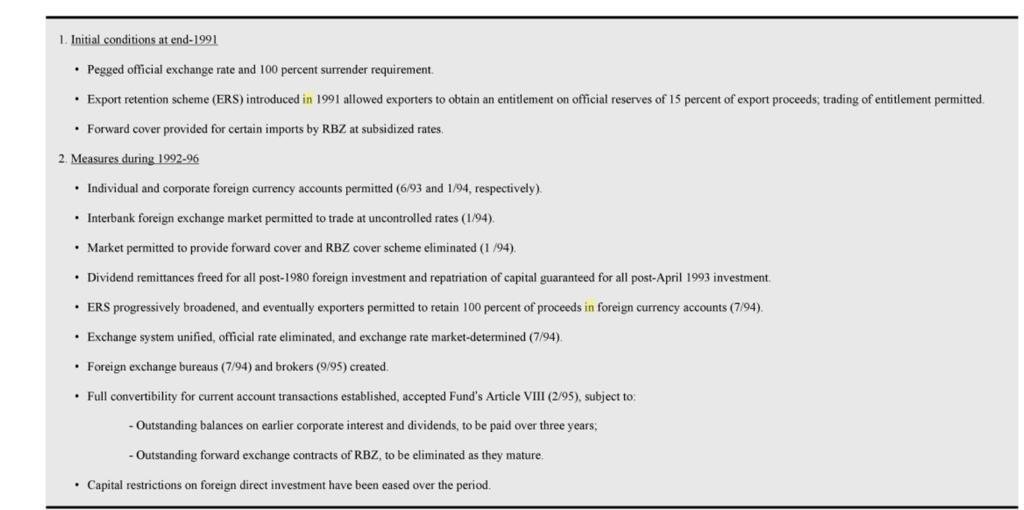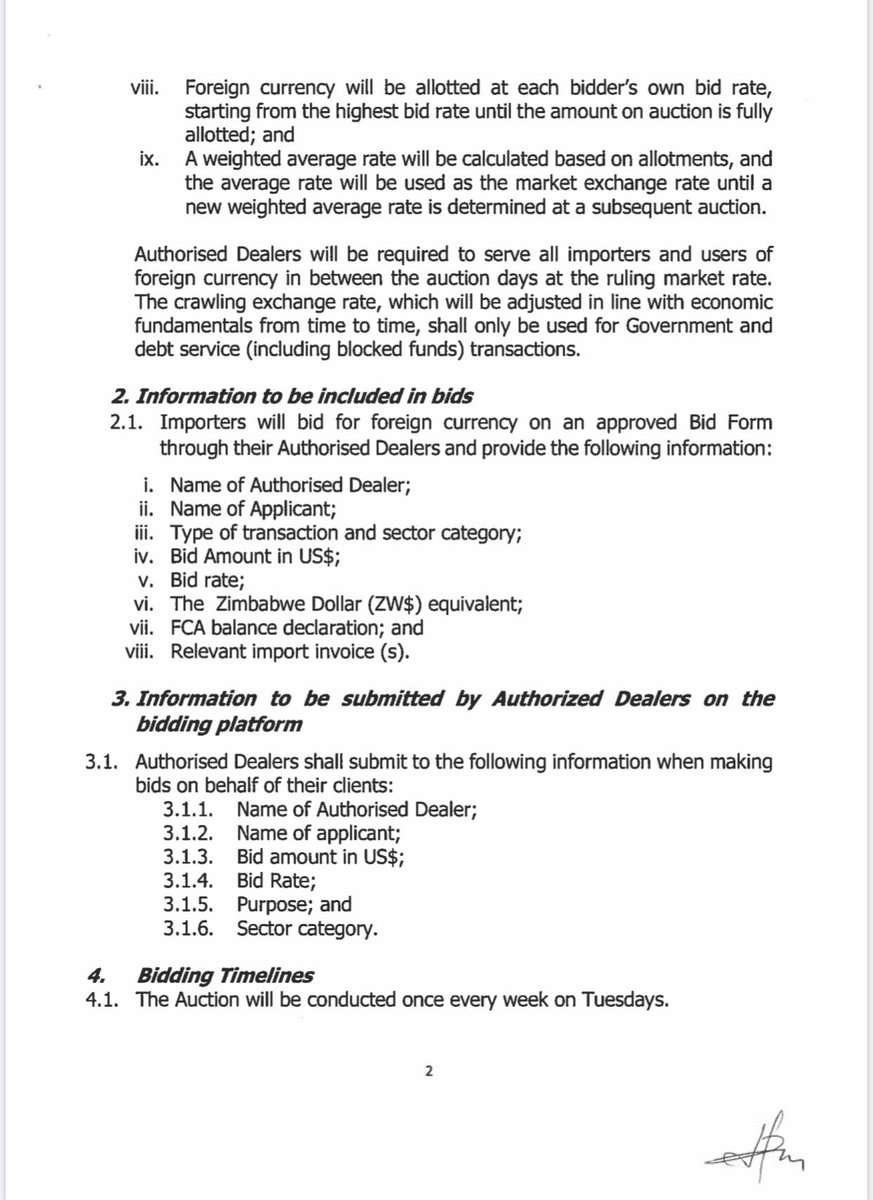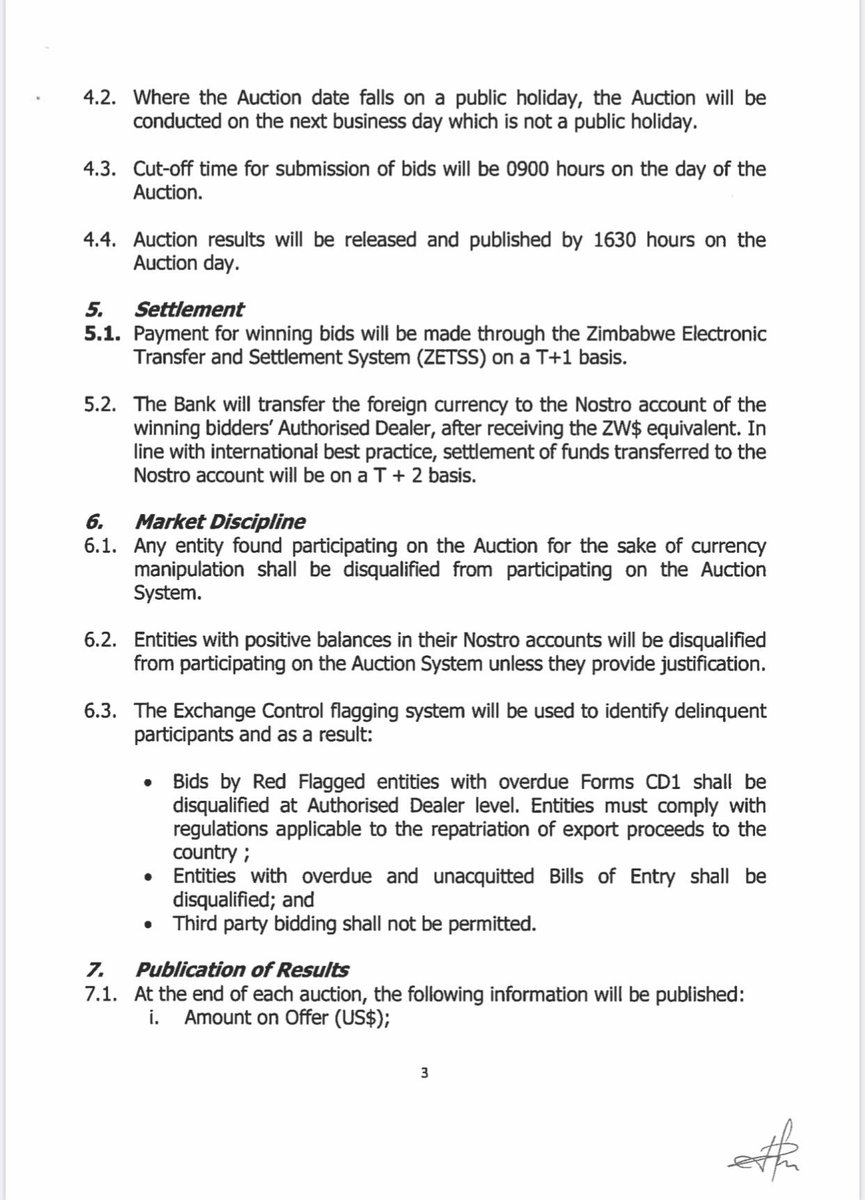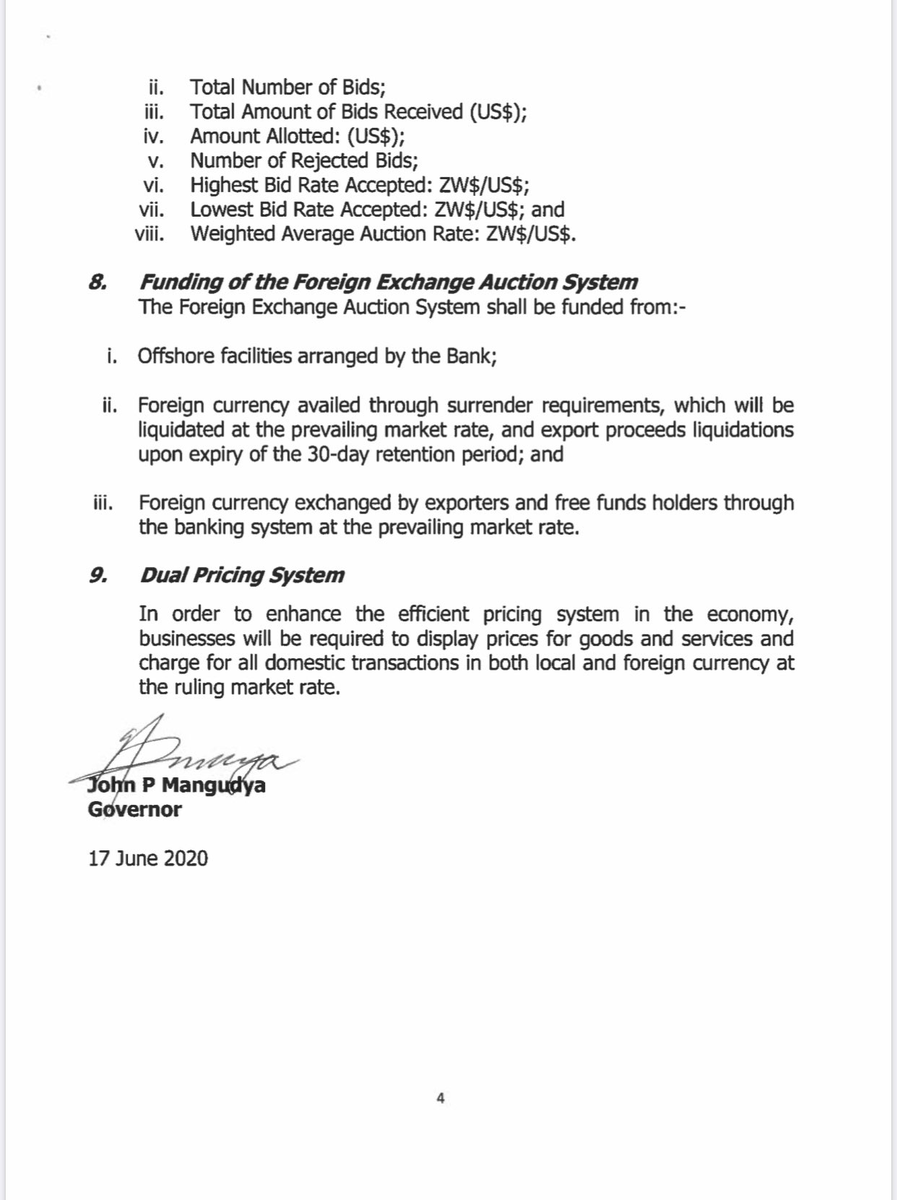BIG Thread 


Seeking #EconomicGrowth | The past shouldnt be the present&future.
 1/ An economy needs growth based on:
1/ An economy needs growth based on:
i. export performance & promotion,
ii. high government investment in infrastructure, &
iii. infusion of foreign capital.
@ZimTreasury @ReserveBankZIM



Seeking #EconomicGrowth | The past shouldnt be the present&future.
 1/ An economy needs growth based on:
1/ An economy needs growth based on: i. export performance & promotion,
ii. high government investment in infrastructure, &
iii. infusion of foreign capital.
@ZimTreasury @ReserveBankZIM
2/
 Expropriation of #ExportEarnings started before independence when 100% of foreign currency earnings were surrendered to the central bank.
Expropriation of #ExportEarnings started before independence when 100% of foreign currency earnings were surrendered to the central bank.
From pre-independence, the Gvt had a #ForeignCurrencyAllocationSystem.
Source: UNCTAD/UNDP https://unctad.org/en/Docs/poedmm128.en.pdf (1999)
 Expropriation of #ExportEarnings started before independence when 100% of foreign currency earnings were surrendered to the central bank.
Expropriation of #ExportEarnings started before independence when 100% of foreign currency earnings were surrendered to the central bank. From pre-independence, the Gvt had a #ForeignCurrencyAllocationSystem.
Source: UNCTAD/UNDP https://unctad.org/en/Docs/poedmm128.en.pdf (1999)
3/  A rebate scheme was introduced in 1992, so that exporters do not pay duties on imported inputs.
A rebate scheme was introduced in 1992, so that exporters do not pay duties on imported inputs.
 Ever heard of rebates today?
Ever heard of rebates today?
 A rebate scheme was introduced in 1992, so that exporters do not pay duties on imported inputs.
A rebate scheme was introduced in 1992, so that exporters do not pay duties on imported inputs.  Ever heard of rebates today?
Ever heard of rebates today?
4/
 Then in 1993, the Gvt introduced #ExportRetentionScheme where an exporter was allowed to retain a % of its own earnings for the purchase of machinery & raw materials needed to boost output.
Then in 1993, the Gvt introduced #ExportRetentionScheme where an exporter was allowed to retain a % of its own earnings for the purchase of machinery & raw materials needed to boost output.
 Then in 1993, the Gvt introduced #ExportRetentionScheme where an exporter was allowed to retain a % of its own earnings for the purchase of machinery & raw materials needed to boost output.
Then in 1993, the Gvt introduced #ExportRetentionScheme where an exporter was allowed to retain a % of its own earnings for the purchase of machinery & raw materials needed to boost output.
5/
 The #ExportRetentionScheme started off as follows:
The #ExportRetentionScheme started off as follows:
i. Mining&Agriculture: 5%
ii. Manufacturing, tourism, construction & road hauliers: 7.5%.
 So one can see that its an old mindset of an #EconomicStatist to expropriate private earnings.
So one can see that its an old mindset of an #EconomicStatist to expropriate private earnings.
 The #ExportRetentionScheme started off as follows:
The #ExportRetentionScheme started off as follows:i. Mining&Agriculture: 5%
ii. Manufacturing, tourism, construction & road hauliers: 7.5%.
 So one can see that its an old mindset of an #EconomicStatist to expropriate private earnings.
So one can see that its an old mindset of an #EconomicStatist to expropriate private earnings.
6/
 Expropriation of FX isnt a tax under the Finance Act but a nationalisation.
Expropriation of FX isnt a tax under the Finance Act but a nationalisation.
There is the consideration that gvt expenses that require FX should be funded by the FX produced by & taken from exporters. This is #statist.
 Expropriation of FX isnt a tax under the Finance Act but a nationalisation.
Expropriation of FX isnt a tax under the Finance Act but a nationalisation. There is the consideration that gvt expenses that require FX should be funded by the FX produced by & taken from exporters. This is #statist.
6/
The proportion of these retentions was
increased during 1993 & in 1994 all exporters were allowed 100% retention. It was then that exchange rate came to be market determined.
From 23 June there will be such market system but exporters' earnings will still be taken away.
The proportion of these retentions was
increased during 1993 & in 1994 all exporters were allowed 100% retention. It was then that exchange rate came to be market determined.
From 23 June there will be such market system but exporters' earnings will still be taken away.
7/
According to the IMF Staff Country Report #97/59 (published in July 1997), in 1996 all export earnings continued to be surrendered in full to the central bank as it was before 1980, the export retentions were for use by the exporters only.
 Any measures of 1992-96 today?
Any measures of 1992-96 today?
According to the IMF Staff Country Report #97/59 (published in July 1997), in 1996 all export earnings continued to be surrendered in full to the central bank as it was before 1980, the export retentions were for use by the exporters only.
 Any measures of 1992-96 today?
Any measures of 1992-96 today?
8/
All the foreign exchange for imports were obtained by way of direct allocation through a foreign currency allocation committee which was abolished in 1994 & later reintroduced when the past became the present.
All the foreign exchange for imports were obtained by way of direct allocation through a foreign currency allocation committee which was abolished in 1994 & later reintroduced when the past became the present.
9/
"Agricultural marketing boards set domestic farmgate prices by cabinet directive and were in total control over the purchase and export of agricultural commodities designed to save or earn foreign exchange...."
"Agricultural marketing boards set domestic farmgate prices by cabinet directive and were in total control over the purchase and export of agricultural commodities designed to save or earn foreign exchange...."
10/
From 1965, the Gvt introduced import-substituting industrialisation (ISI) & extensive protectionism in the form of import quotas, controls on prices, investment & foreign exchange allocation.
Tor Skålnes, Economic Nationalism During UDI, 1965–79
From 1965, the Gvt introduced import-substituting industrialisation (ISI) & extensive protectionism in the form of import quotas, controls on prices, investment & foreign exchange allocation.
Tor Skålnes, Economic Nationalism During UDI, 1965–79
11/
 This economy is lacking any policy measures to industrialise.
This economy is lacking any policy measures to industrialise.
To industrialise as such, there was/is an importation of technology, capital & intermediate goods (raw materials or inputs for the industry) & these were/are financed by exports.
 This economy is lacking any policy measures to industrialise.
This economy is lacking any policy measures to industrialise. To industrialise as such, there was/is an importation of technology, capital & intermediate goods (raw materials or inputs for the industry) & these were/are financed by exports.
12/
At the time of independence, ZW's economy was based on:
i. manufacturing (25% of the GDP),
ii. agriculture (14%), &
iii. mining (9%).
These three, agriculture (tobacco), mining (gold) & manufacturing (ferro-alloys) contributed 30% of the exports.
At the time of independence, ZW's economy was based on:
i. manufacturing (25% of the GDP),
ii. agriculture (14%), &
iii. mining (9%).
These three, agriculture (tobacco), mining (gold) & manufacturing (ferro-alloys) contributed 30% of the exports.
13/
By 1965, the colonial manufacturing sector accounted for 40% of total exports.
Manufacturing production stood as follows: foodstuffs 25%, metals&metal products 14.5%, chemicals 13.3%, textiles 9%
By 1965, the colonial manufacturing sector accounted for 40% of total exports.
Manufacturing production stood as follows: foodstuffs 25%, metals&metal products 14.5%, chemicals 13.3%, textiles 9%
14/
In the first decade of independence, ZW's manufacturing accounted for 25% of economic output & grew up by an average of 3.5% pa while agriculture production grew by 3% pa.
 What is it like now & in the past 10 years?
What is it like now & in the past 10 years?
In the first decade of independence, ZW's manufacturing accounted for 25% of economic output & grew up by an average of 3.5% pa while agriculture production grew by 3% pa.
 What is it like now & in the past 10 years?
What is it like now & in the past 10 years?
15/
From 1982 onwards, there were "import controls and foreign exchange rationing were maintained and tightened solely in order to control the current account. In other words, they were instruments of macroeconomic rather than industrial policy."
From 1982 onwards, there were "import controls and foreign exchange rationing were maintained and tightened solely in order to control the current account. In other words, they were instruments of macroeconomic rather than industrial policy."
16/
Until 1990, there were numerous regulations to restrict firms' abilities to retrench, cumbersome investment approval procedures, restrictive import practices & restrictions on remittances of profits÷nd & the reinvestment of profits.
Nothing has changed till today!
Until 1990, there were numerous regulations to restrict firms' abilities to retrench, cumbersome investment approval procedures, restrictive import practices & restrictions on remittances of profits÷nd & the reinvestment of profits.
Nothing has changed till today!
17/ This can read like today, "Despite economic structural reforms&liberalisation of the economy, growth was impeded by persistent imprudent spending necessitating excessive borrowing&high interest rates reducing the availability of pvt sector credit & stifling of investment."
18/ The ingredients of World Bank structural adjustment programme in 1990: 1) trade liberalisation, 2) budget deficit reduction, 3) deregulation of prices, wages, transport & investment, & 4) commercialisation & improved
efficiency of parastatals.
 Has anything changed today?
Has anything changed today?
efficiency of parastatals.
 Has anything changed today?
Has anything changed today?
From 1965-80, ZW's economy was run on the basis of #EconomicStatism. This carried over from 1980-90 when economic liberalisation loosened controls till 2000.
 From around 2003 when Gideon Gono became governor, he had a siege&controls mentality. We are currently back 2 the past.
From around 2003 when Gideon Gono became governor, he had a siege&controls mentality. We are currently back 2 the past.
 From around 2003 when Gideon Gono became governor, he had a siege&controls mentality. We are currently back 2 the past.
From around 2003 when Gideon Gono became governor, he had a siege&controls mentality. We are currently back 2 the past.
20/ What is @ZimTreasury @MthuliNcube @GGuvamatanga & John Mangudya saying or doing that wasnt said or done by Gono? What were the results?
Back to the past because there is an assumption that it could have been done better!
#TirikuendaKwatakabva #TirikuendaKwatakafukatira
Back to the past because there is an assumption that it could have been done better!
#TirikuendaKwatakabva #TirikuendaKwatakafukatira
21/  My wish is for the minister to do better. These actions take us back to the past of a fast dying economy.
My wish is for the minister to do better. These actions take us back to the past of a fast dying economy.
@baba_nyenyedzi @brains_muchemwa @kudzie_sharara @czionline @ZNCCNational @tatenda_jemwa @newswireZW @kukurigoZW @PriscaMutema2 @ZimFact @BusisaMoyo @mmawere @cifozim
 My wish is for the minister to do better. These actions take us back to the past of a fast dying economy.
My wish is for the minister to do better. These actions take us back to the past of a fast dying economy.@baba_nyenyedzi @brains_muchemwa @kudzie_sharara @czionline @ZNCCNational @tatenda_jemwa @newswireZW @kukurigoZW @PriscaMutema2 @ZimFact @BusisaMoyo @mmawere @cifozim

 Read on Twitter
Read on Twitter






